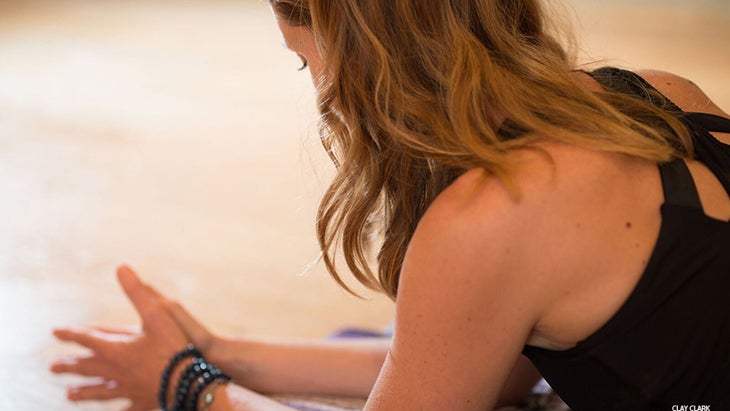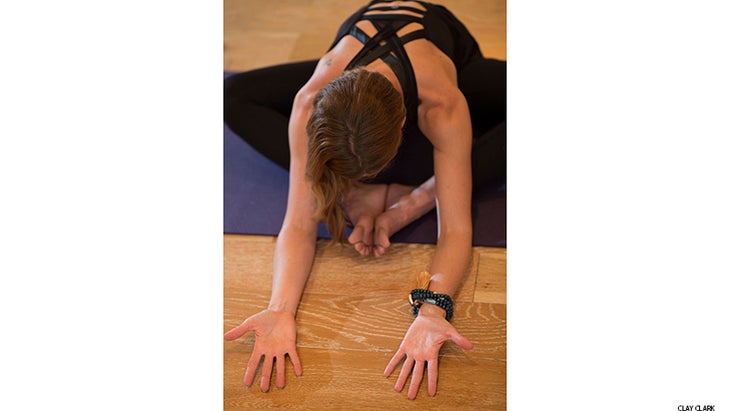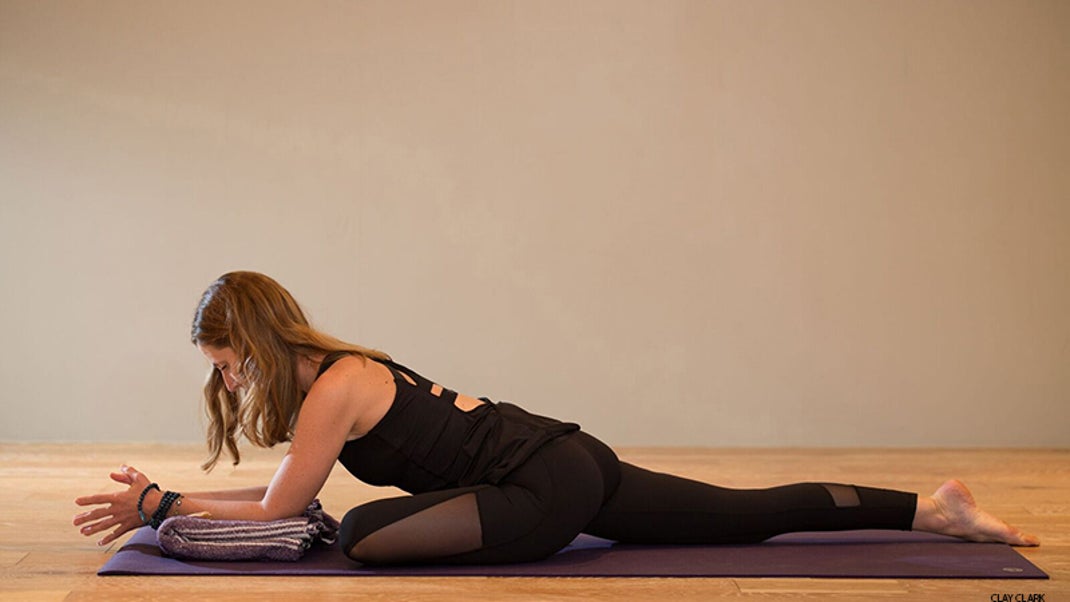When you’re too busy, Yin Yoga is the perfect way to relax and recharge. Yin Yoga is a slow-paced yoga style that focuses on elongating muscles and connective tissues. It has many benefits including stress relief, lower back pain relief, improved sleep quality, increased range of motion in joints, better digestion, and elimination. Yin Yoga can be practiced at any time of day or night so it’s easy to find time for it even when your schedule seems impossible!
As a full-time yoga instructor with a demanding schedule that has me running between classes and private sessions most of the day, my personal yin practice has become essential to recharge and give back to my body, mind, and spirit. Yin is an introspective practice that offers a chance to turn inward and nurture the calm, quiet center that is innate in all of us.
It is a practice in stillness, patience, and non-reactivity. Through yin yoga, we become adept at self-care. We become better listeners with practice tuning in; we become wiser as we get to know ourselves from the inside out, and we become more curious about the world through the exploration of our own inner worlds.
To practice yin is to relinquish control—such a novel and therapeutic concept in our modern-day lives. On the surface, the yin practice might appear uneventful. But if you are able to tune in, you will encounter some pretty fascinating events occurring in the layers beneath the skin. Not convinced? Dig deeper into 10 nourishing qualities and therapeutic benefits I’ve encountered both with my students and through my own practice of this form of medicine like no other.
1. The yin practice can help the body restore range of motion.
For a healthy range of motion, layers of connective tissue must allow muscles to glide over each other. But injury, habitual posture in daily life, and aging, among other factors, can bind these connective tissues together, creating so-called adhesions and restricting that movement between the sliding surfaces of the muscles. Like a traffic jam, adhesions block the flow of nutrients and energy through the body, causing pain and limiting mobility. Holding poses that gently lengthen the muscles and fascia helps break up adhesions and applying mild stress to joints and connective tissues can increase their range of motion.
2. Yin yoga revitalizes the tissues of the body.
Our body’s tissues can be revived by a good long soak the same way that an old, stiff sponge can. As you hold a yin pose, the subtle release that takes you deeper into the pose is the tissues lengthening, hydrating, and becoming more pliable. If you pay close attention, you can sense the tissues being stretched, squeezed, twisted, and compressed. A yin practice can leave you feeling as though you’ve had a massage.
3. Yin offers a unique opportunity to cultivate gratitude for the body.
The simplicity of a yin practice allows us to return to our bodies and to see clearly just how remarkable we really are. Journeying into the deeper layers of ourselves, we tune into our inner workings, connecting to respiratory and circulatory functions, internal organs, and sensations within the muscles and joints. This heightened awareness of the physiological processes of the body ultimately moves us closer to santosha, or contentment.

4. The yin practice forces us to slow down.
Yin poses’ long holds offer a chance to marinate in stillness. When you allow yourself to stay present and experience the near-imperceptible shifts that occur while holding a yin posture, time opens up. Deadlines, commitments, pressing matters, and to-do lists fade to the background, leaving tremendous space for rest and renewal.
5. Yin yoga teaches self-compassion.
The ability to tend to all facets of ourselves (physical, mental, emotional, and spiritual) is fundamental to our wellbeing. The yin practice provides an opportunity to observe, nurture, soothe, and calm ourselves. The act of carefully taking a posture and tending to your body’s unique set of needs for the duration of the hold is a form of self-care and lovingkindness.
6. The long hold times of a yin practice offer the chance to sit with our emotions.
Our bodies store emotions, and it’s not uncommon for sensitive thoughts, feelings, and memories to surface while practicing any form of yoga. Yin teaches us how to be gentle, patient, and nonreactive. When emotions bubble to the surface, the conditions are safe.
7. Yin yoga can help us become more resilient to stress.
Holding a pose for several minutes can provoke anxiety. But when we approach it with tenderness, the body acclimates. Surrender is a common theme in yin yoga, and giving up the need to control a situation is a lesson that we can carry with us into our day-to-day lives. The ability to adapt to the ups and downs of life and to manage change with grace can lessen our predisposition to stress.
8. Yin yoga can help us tap into the parasympathetic nervous system.
Diaphragmatic breathing, or belly breathing, is a powerful way to trigger the parasympathetic nervous system. You may have heard some of the reasons activating the parasympathetic nervous system is beneficial (stress, tension, blood pressure, sleep, digestion, immune function, hormones, etc)—and that most of us don’t do it often enough.
Instead, we spend our days locked in sympathetic nervous system overdrive, constantly being pulled from one overly important deadline to another. Belly breathing can be a quick and easy way to change this. Pay close attention while breathing from the abdomen and in no time you will notice a significant shift. It may feel like a wave of relaxation washes over the body.
The deepest layers of the belly soften, the forehead tingle, and the brain relaxes. It’s as if the whole body takes a prolonged sigh. As you move deeper into the yin practice, the breath slows down significantly drawing you deeper and deeper into this parasympathetic, or relaxation, mode. This is where the internal organs get a chance to catch up on their to-do list (digest, eliminate toxins, heal, repair).

9. The stillness of a yin practice primes us for meditation.
Meditation is not necessarily something you have to find; sometimes it finds you. The yin practice sets us up to tap into the meditation bandwidth. We rarely see who we really are because the cloud of thoughts and distractions block the view. When we create opportunities for physical stillness in a yin practice, we also create the perfect conditions for the brain to become clear. In these precious moments, we are able to see our true selves.
10. Yin yoga cultivates balance.
Your own health and wellbeing is a balancing act. If you look at the yin/yang symbol you will see that the white and black forms are in perfect balance. Many of us live very active (yang) lifestyles and leave little or no time to foster the quiet, introspective side. Over time this can be physically, mentally, and emotionally draining. Through yin practice, we can restore equilibrium and feel whole.
Conclusion:
Yin practice provides many benefits, all of which can be found in the Yin Yoga Teacher Training Course.



